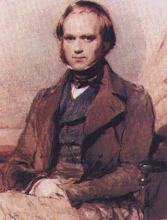
The tongue-twister about woodchucks could be asked of Castoroides ohioensis, the so-called giant beaver that inhabited North America during the last ice age, about 14,000 years ago.
The ice age animal was about twice the size of modern beavers, but, surprisingly, there is no evidence that the ice age beaver ate wood.
We are what we eat, and researchers from Michigan State University and the University of Wisconsin studied the isotopic composition of a jawbone of the ice age beaver and found that the ratio of carbon 13 to carbon 12 did not match that expected for an animal that ingested wood, but was closer to that of an animals that dined on aquatic plants.
The scientists compared the giant beaver to be, ecologically, “like little hippos.”
Source: Catherine Yansa, Geological Society of America Meeting, October 19, 2010
Geological Society of America Abstracts with Programs, Vol. 41, No. 7, p. 257
Reported by Perkins, S., Science News, November 21, 2009
Illustration (inset): giant beaver compared to modern beaver. From www.nature.ca


No comments:
Post a Comment